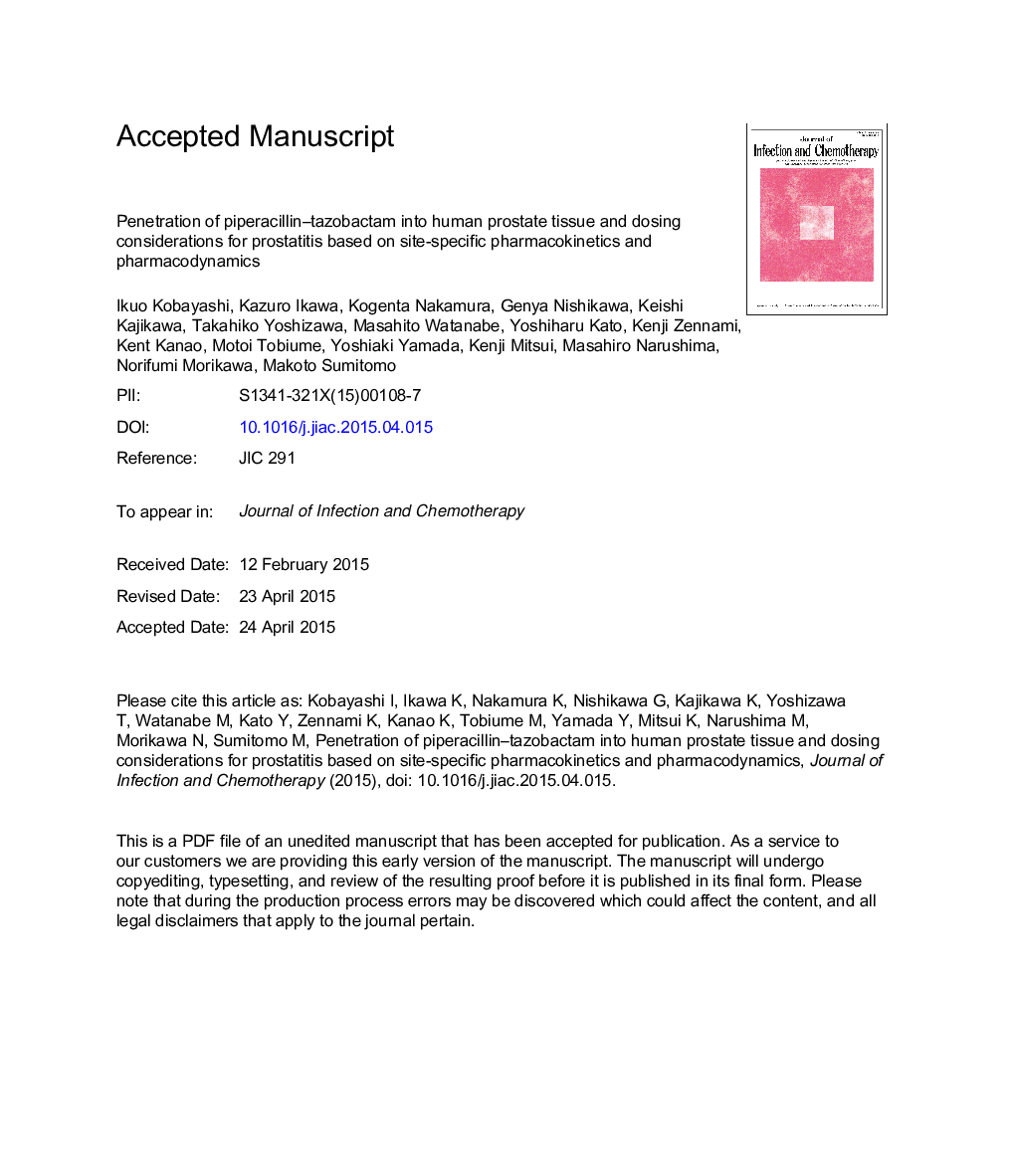| Article ID | Journal | Published Year | Pages | File Type |
|---|---|---|---|---|
| 6123595 | Journal of Infection and Chemotherapy | 2015 | 23 Pages |
Abstract
This study aimed to investigate the penetration of PIPC-TAZ into human prostate, and to assess effectiveness of PIPC-TAZ against prostatitis by evaluating site-specific PK-PD. Patients with prostatic hypertrophy (n = 47) prophylactically received a 0.5 h infusion of PIPC-TAZ (8:1.2-0.25 g or 4-0.5 g) before transurethral resection of the prostate. PIPC-TAZ concentrations in plasma (0.5-5 h) and prostate tissue (0.5-1.5 h) were analyzed with a three-compartment PK model. The estimated model parameters were, then used to estimate the drug exposure time above the minimum inhibitory concentration for bacteria (T > MIC, the PD indicator for antibacterial effects) in prostate tissue for six PIPC-TAZ regimens (2.25 or 4.5 g; once, twice, three times or four times daily; 0.5 h infusions). Prostate tissue/plasma ratio of PIPC was about 36% both for the maximum drug concentration (Cmax) and the area under the drug concentration-time curve (AUC). Against MIC distributions for isolates of Escherichia coli, Klebsiella species and Proteus species, regimens of 4.5 g twice daily and 2.25 g three times daily achieved a >90% probability of attaining the bacteriostatic target for PIPC (30% T > MIC) in prostate tissue; regimens of 4.5 g three times daily and 2.25 g four times daily achieved a >90% probability of attaining the bactericidal target for PIPC (50% T > MIC) in prostate tissue. However, against Pseudomonas aeruginosa isolates, none of the tested regimens achieved a >90% probability. PIPC-TAZ is appropriate for the treatment of prostatitis from the site-specific PK-PD perspective.
Keywords
Related Topics
Life Sciences
Immunology and Microbiology
Applied Microbiology and Biotechnology
Authors
Ikuo Kobayashi, Kazuro Ikawa, Kogenta Nakamura, Genya Nishikawa, Keishi Kajikawa, Takahiko Yoshizawa, Masahito Watanabe, Yoshiharu Kato, Kenji Zennami, Kent Kanao, Motoi Tobiume, Yoshiaki Yamada, Kenji Mitsui, Masahiro Narushima, Norifumi Morikawa,
